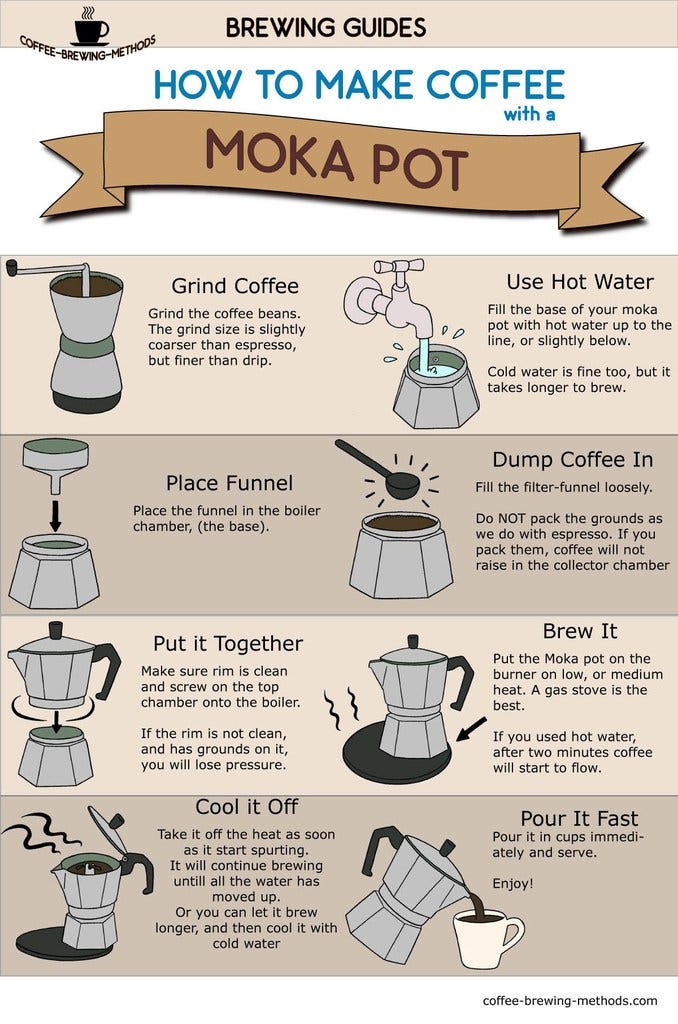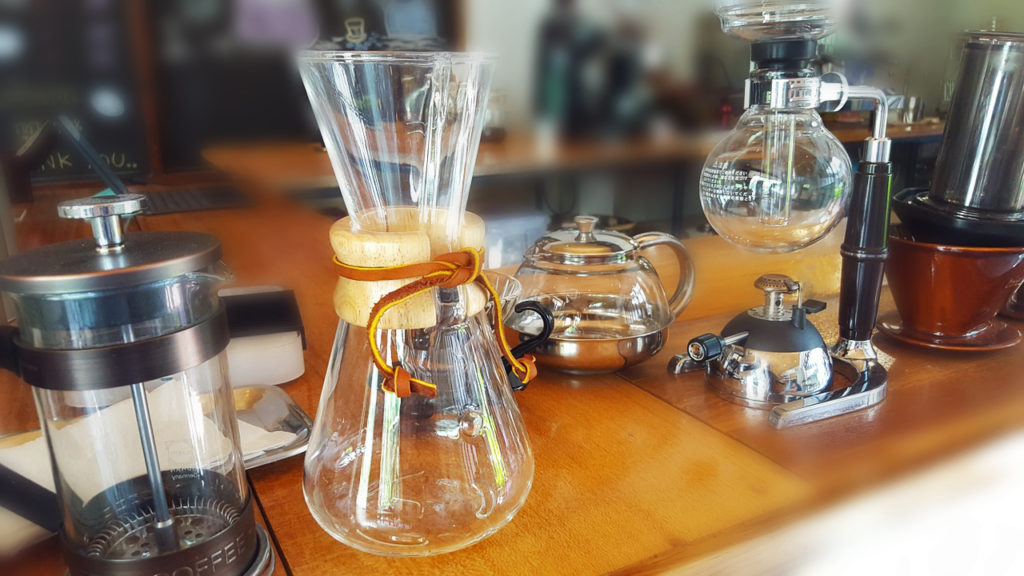Mastering Coffee Brewing Methods: Essential Strategies for Every Coffee Lover
Wiki Article
The Scientific Research Behind Coffee Brewing: How Temperature and Time Affect Your Beverage
Comprehending the science behind coffee developing exposes that temperature and time are not plain variables yet crucial components that dictate the beverage's taste profile and overall top quality. As we check out the subtleties of these elements, the question occurs: how can one successfully balance temperature level and time to accomplish that perfect brew?The Chemistry of Coffee Extraction
The chemistry of coffee extraction dives into the detailed procedures that change raw coffee beans right into the fragrant beverage taken pleasure in worldwide. This change largely involves the solubility of various substances present in the beans, which are influenced by factors such as grind size, water high quality, and the brewing approach employed.During the developing process, warm water acts as a solvent, removing soluble substances, including high levels of caffeine, sugars, lipids, and acids, from the coffee grounds. Each substance adds to the flavor account, scent, and body of the last beverage. For circumstances, acids are liable for bright and tasty notes, while oils contribute to an abundant mouthfeel.
The extraction process is not consistent; different substances dissolve at different prices. The first stages of brewing remove acids and sugars, resulting in a positive acidity, while prolonged extraction can cause anger due to over-extraction of unwanted substances. Understanding these chemical interactions is crucial for enhancing brewing techniques, as the balance in between removal time and water temperature level can significantly influence the total top quality of the coffee. Ultimately, mastering the chemistry of coffee extraction is essential to accomplishing a all-around and delicious mug.
Ideal Brewing Temperatures
Finding the right developing temperature is important for unlocking the complete capacity of coffee flavors and aromas - coffee brewing methods. Research study suggests that the optimal array for developing coffee lies in between 195 ° F to 205 ° F(90 ° C to 96 ° C) Within this variety, the extraction procedure successfully dissolves the preferable soluble substances in coffee beans, resulting in a balanced and savory cupDeveloping at lower temperatures, such as listed below 195 ° F(90 ° C ), may result in under-extraction, generating an acidic and weak brew with low-key flavors. On the other hand, developing at temperature levels surpassing 205 ° F(96 ° C) can cause over-extraction, creating a bitter and harsh taste as a result of the extreme dissolution of unfavorable compounds, such as tannins.
Additionally, the suitable brewing temperature level can vary depending on the coffee bean kind and roast level. Lighter roasts typically profit from slightly higher temperature levels to enhance their intricate flavor profiles, while darker roasts might be better suited to reduced temperatures to alleviate resentment.
Eventually, keeping precision in developing temperature levels is essential for attaining an unified balance of flavors, making sure that every mug of coffee supplies a gratifying sensory experience.
Influence of Developing Time
Developing time plays a pivotal duty in identifying the flavor profile and overall high quality of coffee. The extraction process, which influences the taste, scent, and body of the beverage, is mostly based on for how long the coffee premises are in contact with water. Shorter developing times can cause under-extraction, bring about a weak or sour taste, as not nearly enough soluble compounds are liquified. Alternatively, long term developing can cause over-extraction, where unfavorable compounds are launched, resulting in a bitter or astringent taste.Optimum brewing time differs relying on the technique used and the work dimension of the coffee. For example, a French press generally requires concerning four mins, while coffee removal is normally finished within 25 to 30 seconds. It is necessary to adjust developing time in combination with other variables, such as water temperature level and coffee-to-water ratio, to attain the preferred flavor profile.
Understanding the influence of brewing time enables coffee lovers to refine their developing strategies, eventually enhancing the sensory experience of their mug (coffee brewing methods). With careful interest to this variable, one can open the full possibility of the coffee, exposing its one-of-a-kind attributes and nuances
Developing Methods and Their Impacts

For circumstances, approaches like French press and cool mixture enable a much longer steeping time, causing a fuller body and durable taste due to enhanced extraction of oils and soluble solids. Alternatively, coffee developing makes use of high stress and a shorter extraction time, generating a concentrated shot that emphasizes intense flavors and a rich crema.
Pour-over methods, such as Chemex or V60, provide a more controlled extraction process, enabling the brewer to manipulate flow rate and water circulation, which can improve illumination and clearness. Percolation approaches cycle water via the coffee premises several times, leading to a stronger, wikipedia reference typically bitter flavor.
Lastly, using paper filters versus steel filters can additionally affect the final taste; paper filters normally generate a cleaner cup by capturing oils and great bits, while metal filters enable even more oils to pass through, adding to a fuller mouthfeel - coffee brewing methods. Recognizing these subtleties can elevate the coffee experience dramatically
Tips for Perfecting Your Mixture
A well-executed mixture can transform also the easiest coffee right into an exceptional experience. Grind the beans simply before brewing to make the most of freshness, making certain the work dimension matches your brewing technique-- coarser for French press and finer for espresso.Water quality plays a crucial function; use filtered water without contaminations. The optimal developing temperature varies between 195 ° F and 205 ° F(90 ° C to 96 ° C ) As well warm can burn the coffee, while also amazing might under-extract tastes.
Timing is similarly vital. For immersion methods, steeping for 3 to Check Out Your URL 5 minutes is optimal, whereas drip methods typically take around 5 mins. Trying out brew times to discover your recommended strength.

Conclusion
In summary, the complex connection in between temperature and time is critical in the coffee developing process. Adhering to ideal developing temperature levels in between 195 ° F and 205 ° F, along with precise timing tailored to every technique, makes sure the preferred taste account is accomplished. Recognizing these scientific concepts encourages individuals to fine-tune their brewing methods, inevitably resulting in a more delightful these details and balanced coffee experience. Proficiency of these aspects is essential for any coffee enthusiast seeking excellence in their drink.Understanding the scientific research behind coffee developing reveals that temperature level and time are not mere variables but crucial aspects that dictate the drink's flavor account and overall quality. Comprehending these chemical communications is critical for enhancing brewing techniques, as the equilibrium between extraction time and water temperature level can considerably affect the general quality of the coffee.Brewing time plays a crucial function in identifying the taste profile and total quality of coffee. By concentrating on these elements-- bean top quality, grind size, water temperature level, steeping time, and ratio-- you can boost your coffee brewing process, resulting in a regularly premium mug.
In summary, the complex relationship between temperature and time is paramount in the coffee developing procedure.
Report this wiki page